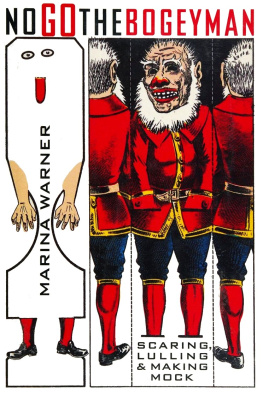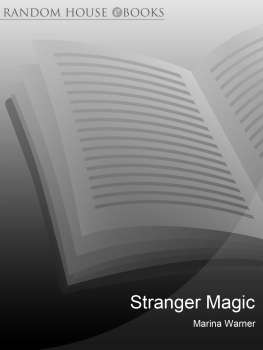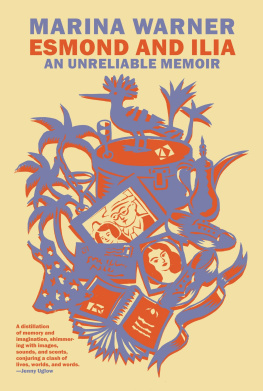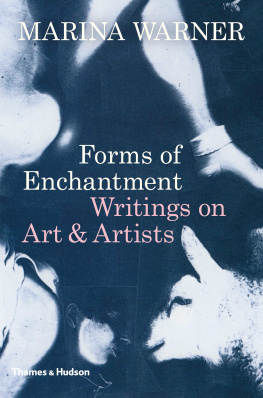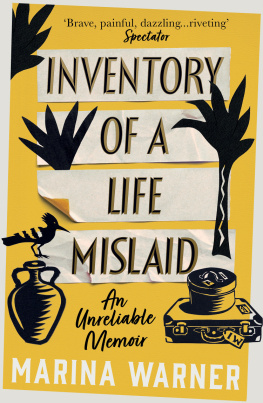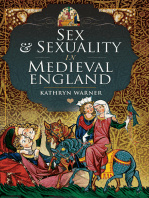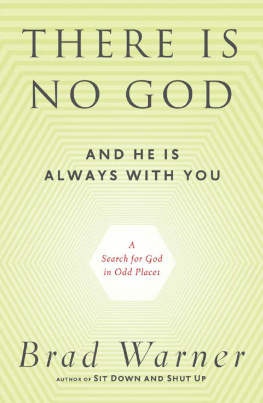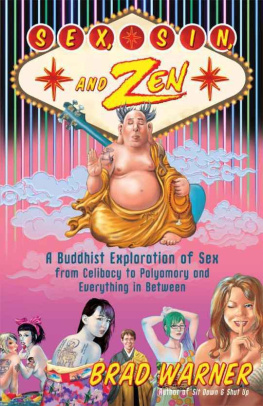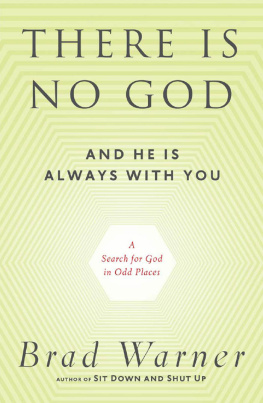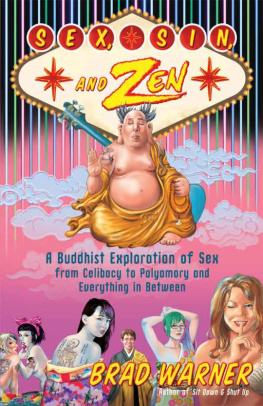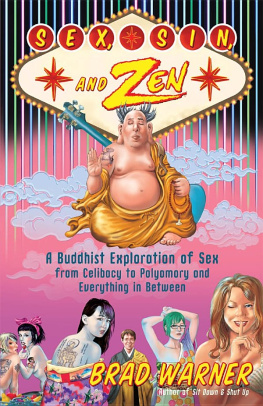
NO GO THE BOGEYMAN:
Scaring, Lulling, and Making Mock
Marina Warner
Farrar, Strauss and Giroux
New York
No Go the Bogeyman: Scaring, Lulling, and Making Mock
1998 by Marina Warner
Originally published in Great Britain in 1998
by Chatto & Windus
First American edition published in 1999
by Farrar, Strauss and Giroux
For Nick Groom
Futilethe Winds
To a Heart in port
Done with the Compass
Done with the Chart
Emily Dickinson
As rational metaphysics teaches that man becomes all things by understanding them (homo intelligentia fit omnia), this imaginative metaphysics shows that man becomes all things by not understanding them (homo non intelligendo fit omnia). Perhaps the latter proposition is truer than the former, for when man understands he extends his mind and comprehends all things, but when he does not understand he makes things out of himself and becomes them by transforming himself into them.
Giambattista Vico ,
Principles of New Science
When children, frightened of the wolf at the window, were asked what did it want to do, the little boy replied, Gobble me up. The little girl said, Lets ask it.
Darrian Leader,
Why Do Women Write More
Letters Than They Post?
Contents
Preface
This book began with the problem of men. After From the Beast to the Blonde was published, many people asked me why had I concentrated so much on women and on the female cast of fairy tales; they wanted to know about the male characters, too. I began to explore stories in this light and was led to the theme of ogres, since princes were on the whole too insipid. But the frighteners of fairy tales and related popular fiction and artefacts are not exclusively male, nor always specially masculine in character, so I found that No Go the Bogeyman took another direction, away from the historical study of gender towards a cultural exploration of fear, its vehicles, and its ambiguous charge of pleasure and pain.
The books title comes from Louis MacNeices poem, Bagpipe Music, which contains a famous verse beginning, Its no go the Yogi-man. I thought he was playing with an existing nursery rhyme, but I have not been able to find it: the bogeyman has remained a ghost behind the lines.
The subject is a huge one, and I have concentrated only on some aspects that struck me as neglected and set aside several important figures who have contributed to the theme: Dracula and Hitchcock, to name but two. Vampires, film noir and Hitchcockian suspense have been dealt with admirably by other writers. Nor have I grappled directly with the philosophical problem of evil, which lurks behind the looming spectre of the bogey and which is increasingly attracting writers and thinkers attention. I hope that my arguments convey my belief that there are particular acts of wrongdoing, but no force of evil itself.
Friends and colleagues have helped me beyond any words of acknowledgement I could write here; I have profited from conversations, perceptions, references, reading, and guidance of all sorts from Mary Douglas, Rudolf Dekker, David Scrase, Anne Barton, Wendy Doniger OFlaherty, Bob Davis, Marier Westermann, Edmund White, John Woolrich, Mark Dorrian, Malcolm Jones, Peter Dronke, John Forrester, Peter Wiseman, Estela Welldon, Lisa Appignanesi, Helen Langdon, Jacqueline Burckhardt, Clio Whitaker, Jacqueline Simpson, Christopher Gill, Sarah Lawson Lucas, Anne Kearney, Roy Foster, Marcia Reed, Jeremy Barlow, Anthony Barnett, Maya Slater, Gillian Avery, Ruth Bottigheimer, Jack Zipes, Louise Neri and Margaret Anne Doody. William Christian, Jr., who suggested the Patum of Berga as a relevant theme, has helped me unstintingly with wise counsel and reading. To them all, much thanks, and hopes that the resulting book will give them pleasure. At the Warburg Institute, London, several people have been unfailingly generous with their suggestions, but Im grateful above all to Paul Taylor and Elizabeth McGrath. Antony Griffiths of the British Museum led me through many wonders in the Print Room. John Rawlins and Robert Davidson of the Carnegie Museum of Natural History, Pittsburgh, conducted me through their wondrous archives of insects. Eleni Vassilika and Penny Wilson of the Fitzwilliam Museum guided me to magic amulets; at the BBC, Beaty Rubens traced dozens of recordings of lullabies from all over the world. I am very grateful to Da Rocio Arnaez for giving me access to the Goya drawings in the Prado, Madrid, and to Isabel Fernandez for her help in Spain. Nigel Glendinning has been exceptionally generous in reading and commenting on my passages about Goya. I am very grateful indeed to him. The artists Janine Antoni and Bobby Baker most kindly supplied images from their work; as did the photographer Cristina Garca Rodero .
I have been richly helped by Clive Hurst and the staff of the John Johnson and Opie collections at the Bodleian Library, Oxford; by Leslie McGrath at the Osborne Collection, Toronto; by Andrea Immel at the Cotsen Collection, Princeton, and by Richard Crangle of the Bill Douglas Centre, Exeter University. Rosemary Hall did some most helpful early footwork on bibliographies. The London Library is as ever a treasure house. The British Library staff, put upon by fate and by policy, were indefatigably patient and knowledgeable. The notes attempt to chart the research that informs this book, and give leads to interested readers; a full bibliography would have become unwieldy in a book that seeks to suggest lines of inquiry.
Mary-Kay Wilmers persuaded me, firmly and perceptively, to confront themes I was avoiding; Carmen Callil supported the idea of the book from the start, with verve and a true friends warmth. I have been extremely fortunate in my publishers. Like many children today, I have more than one family; they have truly helped me thrive: Alison Samuel at Chatto & Windus read the drafts with energy and care; I have benefited very much from her criticisms. Elisabeth Sifton, of Farrar, Straus, and Giroux, groomed my text so finely that I felt like a racehorse. Im very grateful, too, to Philippa Lewis for her help with picture research, and to Catherine Newell; as well as to Beth Humphries for her careful copyediting. Peggy Sadler, who designed the book, worked patiently and scrupulously throughout. My agents Gill Coleridge in London and Amanda Urban in New York gave me spirited support from the start. I hope that my efforts repay their confidence and all their kindnesses.
I gave several talks while the book was in progress and such deadline galvanize ones thoughts, so I am most grateful to Hermione Lee, who asked me to give the Patrides Lecture at York, and inspired me with questions, responses and suggestions throughout, to Michael Wood, who invited me to Princeton; to Edward Said, who asked me to talk at his seminar at Columbia; to Warren Chernaik, who invited me to give the John Coffin lecture at University College, London, and to Jacqueline Rose who chaired it; to Piero Boitani, who organized the
Next page
